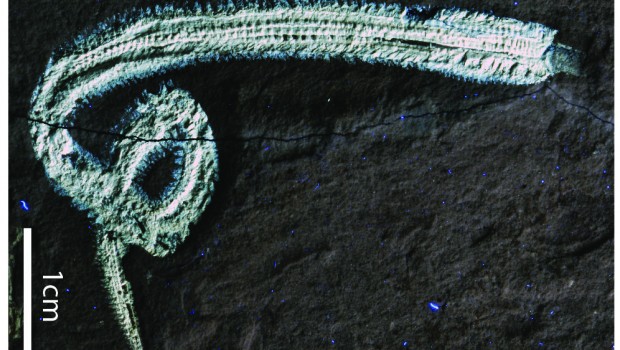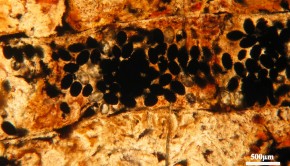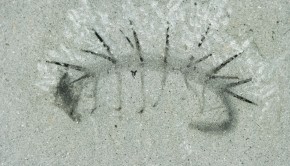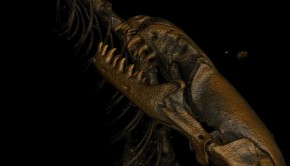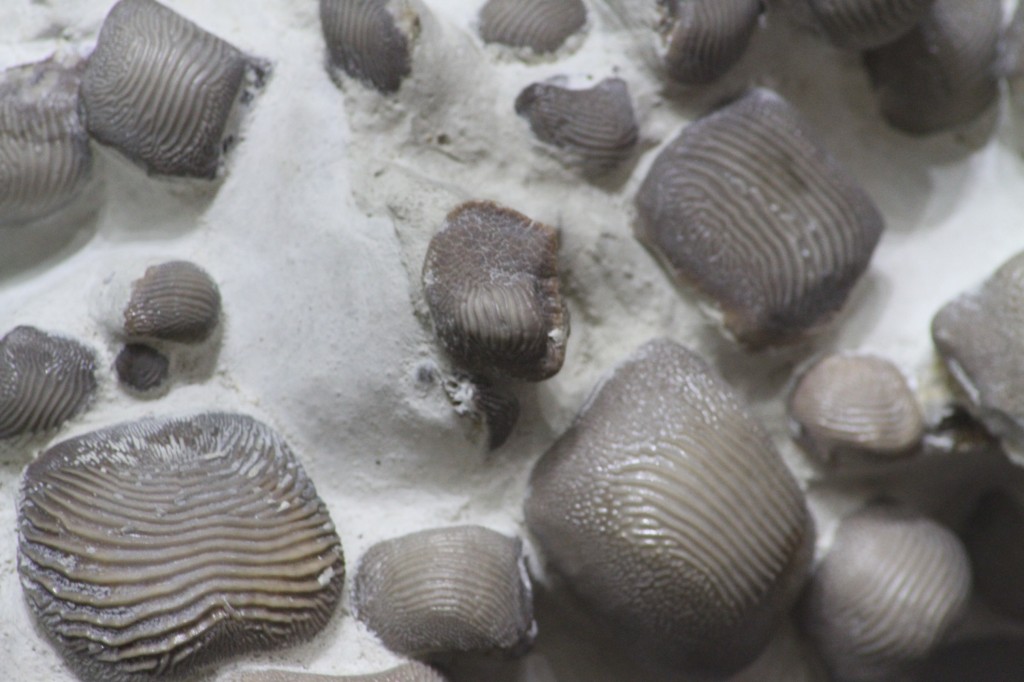A new fireworm from the Cretaceous of Lebanon
A new fossil from Lebanon is named today in BMC Evolutionary Biology as Rollinschaeta myoplena. We spoke to lead author Luke Parry about this interesting fossil and its unusual namesake.
“Due to their soft bodies polychaete annelids (the marine relatives of earthworms and leeches) are unlikely to fossilize. Typically when annelid fossils are found and identified, they are classified by their hard parts such as their jaws or hard, mineralized dwelling tubes. We have described an exceptionally preserved annelid that preserves fine details of its muscle anatomy in great detail. Rapid replacement of the muscle tissue by the mineral apatite has replicated the original muscle so well that individual fibres are visible, even with the naked eye. The muscle bands are so well preserved that we are able to determine exactly what kind of worm this is based only on its muscles. This is the first time a fossil organism has been identified using muscle alone. This fossil has muscular details found only in living fireworms, which are common residents of coral reefs today. When choosing a name for our new beast, we chose to honour Henry Rollins, the legendary muscular frontman of LA punk band Black Flag.”
Interestingly, heavy metal and annelid fossils seem to go hand-in-hand, with other such noteworthy taxa as Kingnites diamondi named after Danish heavy metal legend King Diamond and Kalloprion kilmisteri named after Motorhead’s Lemmy Kilmister.

